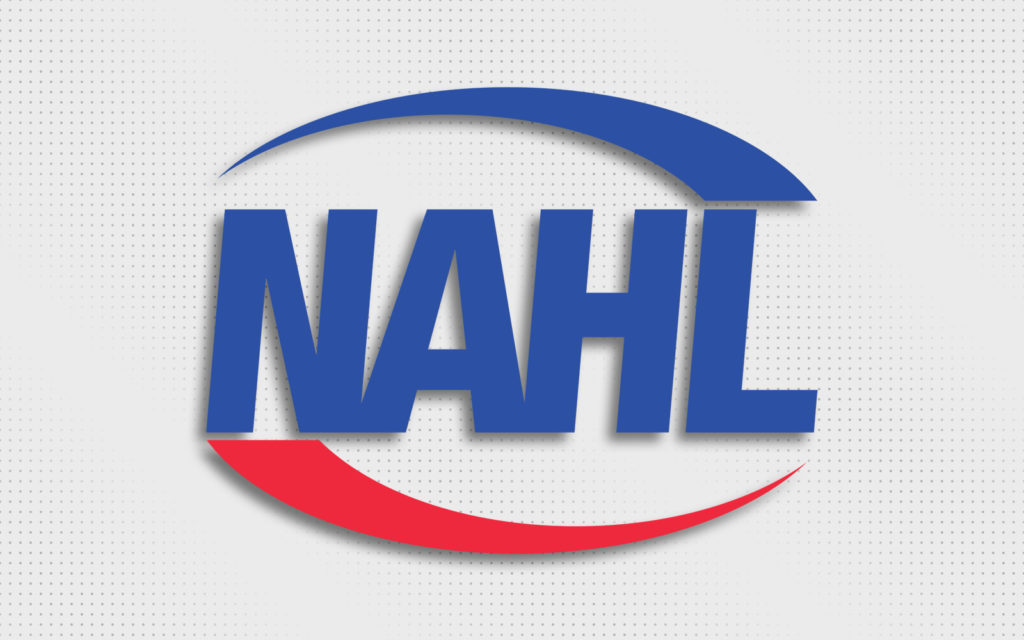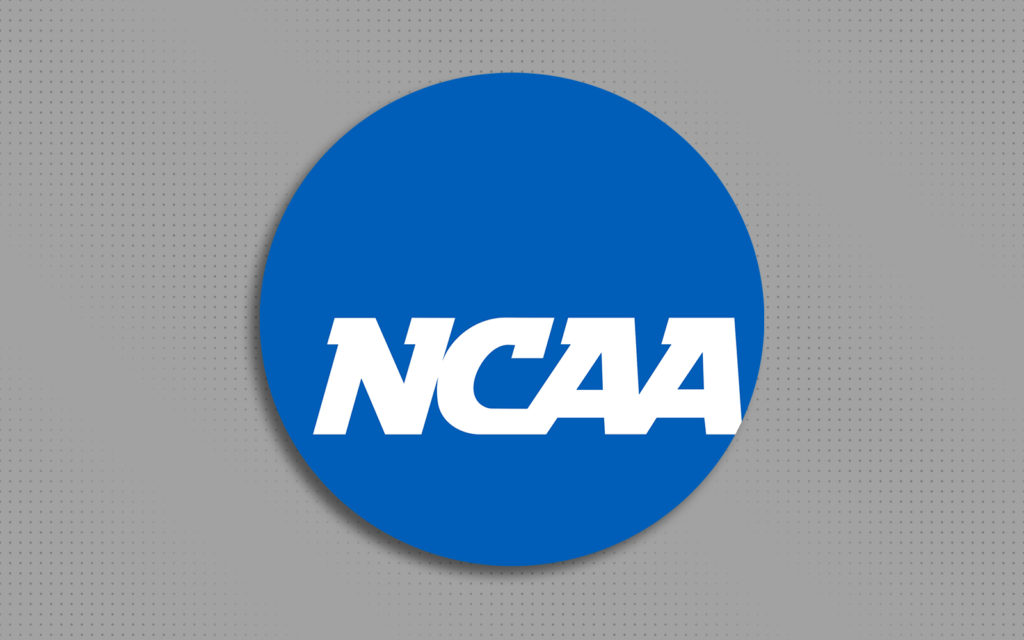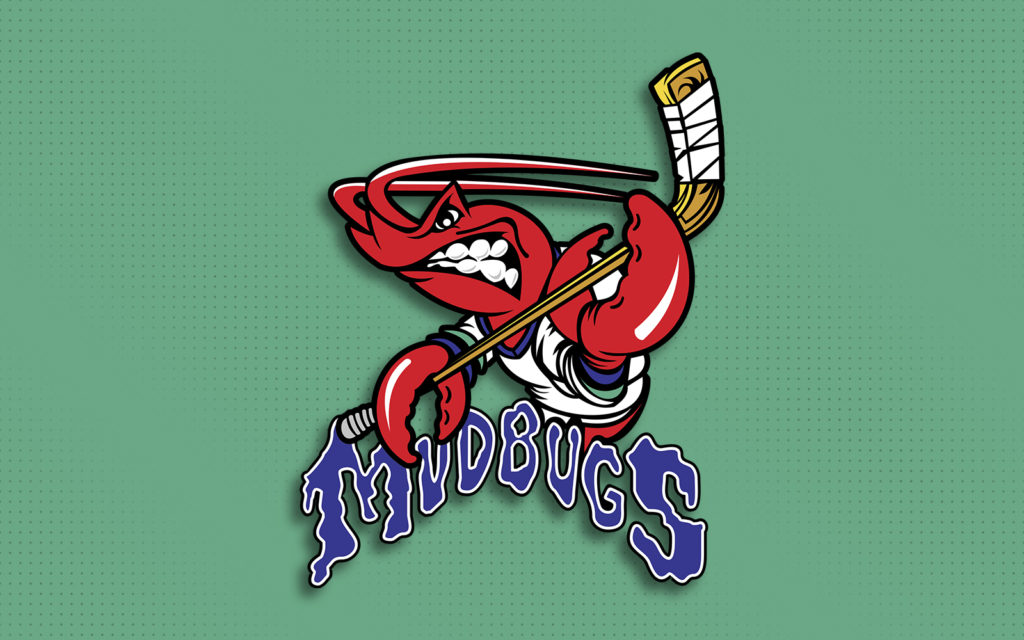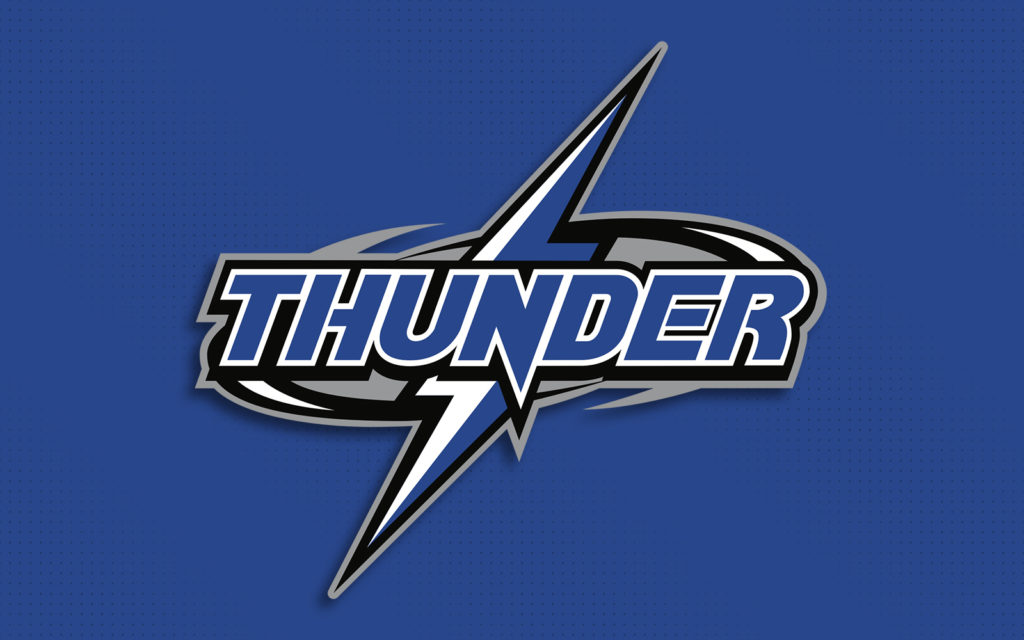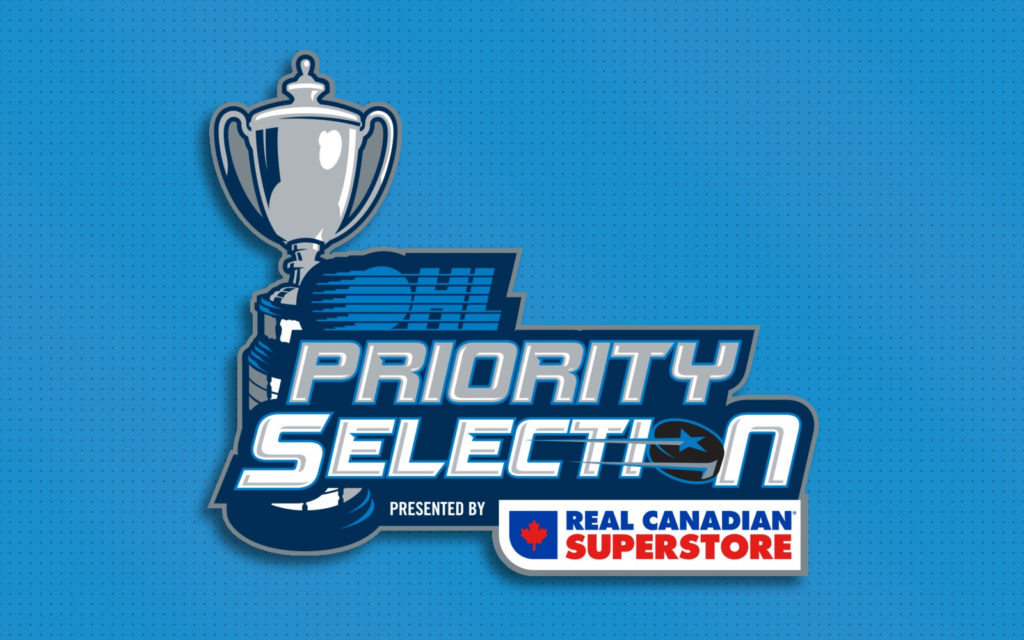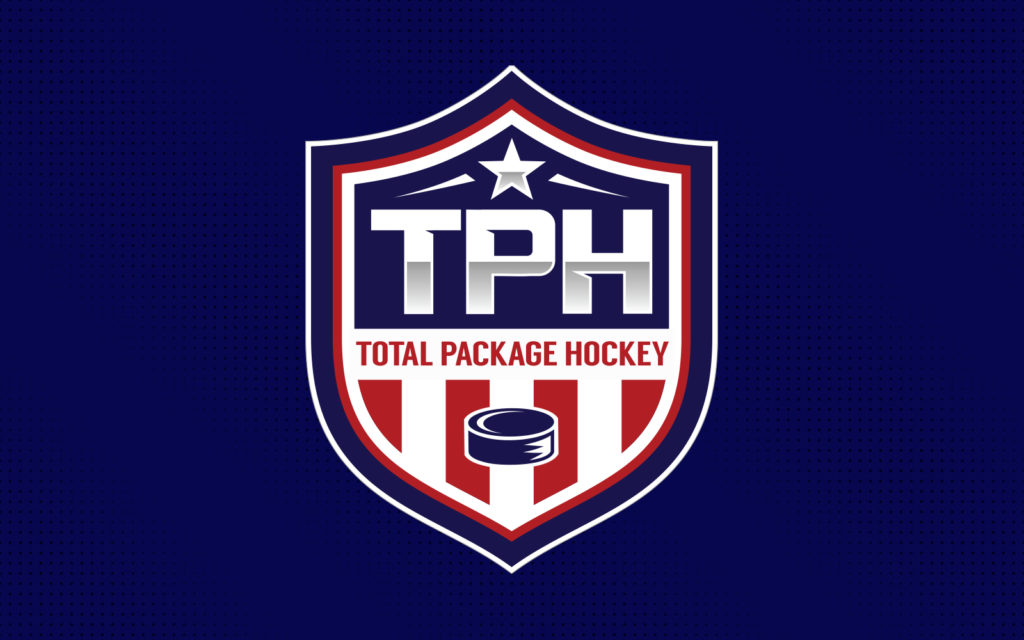Posts by TPH
TPH alum ’99 goaltender Erik Gordon earns NAHL Player of the Week honors
Congrats to TPH alum and current Lone Star Brahmas goaltender Erik Gordon on earning NAHL Player of the Week honors for the week of Oct. 31. From the NAHL:
“Thanks to three wins in Odessa this past week, the Lone Star Brahmas are not only leading the South Division, but statistically, now have the best winning percentage in the NAHL. Goalie Erik Gordon, 17, was between the pipes for two out of the three wins during the weekend and allowed just one goal on 51 shots, making 50 saves. That included a 25-save shutout on Saturday night for the 5’10/160 lbs. native of Duluth, Georgia. Gordon is a perfect 7-0-0 this season with a 1.51 goals against average and a 93.8% save percentage. “Erik was there to make the key saves. We had some breakdowns defensively this weekend and he made some big saves and stood tall when they had some quality opportunities. He was our rock back there this weekend and it was one of the big reasons we picked up three road wins against a very good Odessa team,” said Lone Star head coach Dan Wildfong.”
Recruiting tips via USA Hockey
In a special to USA Hockey, Elizabeth Boger spoke with University of North Dakota head coach Brad Berry about how NCAA hockey coaches hit the recruiting trail. The coach of the defending NCAA Division I champions offered all sorts of advice to young hockey players looking to earn a spot on a college hockey roster:
“Be aware of body language
Negative body language can be an immediate turn-off, and coaches often see that as hindering that player’s development moving forward.
“Our culture is based on positivity, and playing with energy and having a team-first mentality,” Berry said. “Any time we see that body language, whether we go watch a team, or recruit, or have that kid in our program that has it, it’s immediately addressed.”
Ask questions
Coaches want to make sure incoming players will feel comfortable at their new home away from home. When talking to coaches, ask good questions about the program, players, philosophy, school and more.
Coaches also love players who ask questions about the game. It shows a desire to learn and improve and it shows you are not satisfied.
Be a team-first player
For many coaches, a powerful point shot or keen playmaking abilities mean very little if that player’s personality doesn’t live up to their skill level. It’s not just about what a recruit can take in, but what they can give as a person.
“Giving and care – those are two words we use a lot in our culture,” Berry said. “If you can give a lot, it’s going to come back to you. … I think there’s a deep belief or a deep care in our locker room that everyone has each other’s back and that we’re really team-first.”
Stay on top of your schoolwork
Be committed to your schoolwork and driven to excel in the classroom. Remember that only a very small percentage of players go on to play in the NHL. Getting a college degree will set you up for life after college – and life after hockey. But to get into college, you need to be eligible. And remember, the better your grades and test scores are in high school, the more recruiting opportunities can present themselves due to different academic standards at different schools.
How do you respond?
Coaches are very interested in how players respond to certain situations. Complaining to the officials, flailing your arms in the air after allowing a goal and over-the-top goal celebrations show that a player cannot keep their emotions in check during the game or through adversity.
You can still be an intense competitor with an even-keeled temperament. Look no further than former North Dakota standout and current Minnesota Wild forward Zach Parise.
Be coachable
Coaches aren’t just excited to land good players. They look forward to mentoring them and continuing their development, on and off the ice.
“The biggest thing for me is having a role in shaping these kids’ lives to be a good person,” Berry said. “I love seeing our players go through our program and it’s a sad day when they leave our program.”
But if you’re not a coachable kid or responsive to criticism, recruiters can see that. There are a lot of really talented players out there, and for college coaches, a lot of the time their decision making comes down to character.”
Mudbugs’ Croix Evingson commits to Division I UMass-Lowell
The Shreveport Mudbugs, proud members of the North American Hockey League (NAHL), are pleased to announce that defenseman Croix Evingson, 19, has committed to play NCAA Division I hockey at the University of Massachusetts-Lowell, who are members of Hockey East.
Evingson (6’5/210) becomes the first player in the Mudbugs brief NAHL history to make an NCAA commitment.
The native of Anchorage, Alaska, has had a memorable first month of the 2016-17 season. In 9 games played, he has recorded 10 points, which in 3rd on the Mudbugs in scoring and tied for 5th among all NAHL defensemen.
Evingson has made an immediate impact for the Mudbugs, who posted a 5-3-1 record to date. He was named the NAHL Defenseman of the Month for September as he recorded 8 points in just six games during the month, which also included a +8 rating.
Evingson also posted two three-point games and has recorded a point in six of his eight games played to date.
Evingson was selected in the 7th round of the 2016 NAHL Draft. He played last season for the Kenai River Brown Bears in the NAHL and Chicago Steel in the USHL.
“Croix has been a very solid player for us and we were excited to get him in the NAHL Draft this summer. We rely heavily on him in all situations and his combination of size and puck-moving ability makes him a great all-around defenseman,” said Shreveport head coach Karlis Zirnis.
Mudbugs pick up first-ever NAHL victory
By Roy Lang III (Shreveport Times)
The Shreveport Mudbugs made an emphatic debut in the North American Hockey League on Wednesday morning in Blaine, Minnesota. Jacob Holmers scored 2:56 into the 2016-17 season — after more than five years, plastic crustaceans again hit the ice in celebration — and the Mudbugs applied pressure throughout a 3-1 victory against the Northeast Generals at the NAHL Showcase.
Head coach Karlis Zirnis couldn’t have asked for a much better start in the Mudbugs’ return to hockey as his team outshot the Generals 44-22.
Holmers’ first-period wrister from the left circle was part of a dominating opening frame for the teal and purple. The Mudbugs outshot the Generals 19-5 in the first period and 14-5 in the second.
“We want to be fast, we want to be aggressive and we want to be physical,” Zirnis said. “Props to the guys. They came out and executed what the coaching staff asked.”
Gueorgui Feduolov scored 57 seconds into the second period to make it 2-0 Shreveport. The Mudbugs took a 3-0 lead midway through the third period on a goal from Eriks Zohovs.
The Generals spoiled a shutout bid by 17-year-old John Roberts when they scored with 1:57 left in the game.
Feduolov and Zohovs garnered a goal and an assist in their Mudbugs debut. Frankie Melton collected a pair of assists.
“It’s a big showcase for these players, there are a lot of scouts and everything else,” Zirnis said. “They just worried about doing their job, their part. They weren’t distracted by the big lights, showed good composure and played Mudbugs hockey.”
Northeast, also a new NAHL franchise for 2016-17, has lost its first three games of the regular season.
Shreveport gets right back on the ice Thursday’s for an 8:15 p.m. matchup against the Janesville Jets. Friday will offer a 4 p.m. faceoff against the Kenai River Brown Bears. The Mudbugs will complete the showcase with a noon contest against the Johnstown Tomahawks on Saturday.
“I will try to get the exposure for all the players,” Zirnis said regarding the showcase. “Johnny played well in net, but we’ll give the next guy a chance.”
Zirnis said the plan is to start 18-year-old Brookline, Massachusetts, product Dario Latessa between the pipes Thursday night.
Former TPH Thunder standout Jay Williams joins ECHL’s Orlando
The Orlando Solar Bears, ECHL affiliate of the NHL’s Toronto Maple Leafs and AHL’s Toronto Marlies, have announced that the club has agreed to terms with rookie goaltender Jay Williams for the 2016-17 season.
Williams completed a four-year collegiate career this past season with Miami University, where he went 10-9-1 with a 2.58 goals against average, .903 save percentage and two shutouts. In 87 career games for the RedHawks, the 23-year-old posted a record of 46-29-4 with a 2.37 goals against average, .909 save percentage and nine shutouts. During the 2014-15 campaign, he helped backstop the program to a NCHC conference title. The McLean, Va., native also appeared at Washington Capitals development camp earlier this summer.
Prior to competing for Miami, Williams spent two season sin the USHL with the Waterloo Black Hawks and Sioux Falls Stampede, where he compiled a 20-23-8 record in 52 appearances, along with a 3.21 goals against average, a .894 save percentage and five shutouts. Williams was also named a selection to the 2012 USHL/NHL Top Prospects Game.
Cameron Morrissey Commits to D1 NCAA Vermont
Tri State Spartans and TPH are extremely proud to announce that one of our family members just verbally committed to play D1 NCAA women’s hockey at one of top hockey programs in the country for both men and women.
A huge congrats from your Spartans/TPH family to Cameron Morrissey on her acceptance to play hockey at the University of Vermont. Great day for you and your family. Congrats you deserve it as much as anyone.
Cameron has been training with TPH for several years and also with the great Coach Kelly Perrault and the Dayton area Spartans since our inception 2 1/2 yrs ago. She plays her winter hockey for a top ranked Little Caesars. Very very proud of you, best of luck, you will do awesome!
NAHL finishes with record total of 253 NCAA commitments
AUGUST 1, 2016
Editors Note: This story originally ran on June 24th. It has been updated to reflect the final and record-breaking commitment numbers from the 2015-16 season.
As the calendar turns to August, the North American Hockey League (NAHL) now resets its NCAA commitments for the upcoming 2016-17 season, which will be the 41st season of NAHL hockey.
Back on June 24th, the NAHL announced that it had set a new single-season record for NCAA commitments in one calendar year. Over the course of the summer, that total has steadily increased and the league is now please to announce it record-breaking final totals for the 2015-16 season.
During the 2015-16 season, the league had a final total of 253 NCAA commitments. Another astonishing fact was that the NAHL set the record with only 22 teams during the 2015-16 season.
Of the 253 NCAA commitments, 177 (70%) of those were to NCAA Division I schools, while 74 were to NCAA Division III schools and two were to Canadian Interuniversity Sport (CIS) schools. Of the 253 NAHL players making NCAA commitments, 28 of those are NAHL alumni who played in the league prior to this season.
2015-16 College Commmitments
NCAA Division I: 177
NCAA Division III: 74
CIS: 2
TOTAL: 253
The numbers again don’t lie. No other junior league in the world saw as many NCAA commitments for their players, while they were actually playing in the league. The NAHL finished second only to the United States Hockey League (USHL) in total NCAA commitments this past season.
“First and foremost, this is about the players and the quality of hockey currently being played in the NAHL,” said NAHL Commissioner Mark Frankenfeld. “Players are being educated and trained at a higher level, which creates a much greater level of competition across the board. Their development is at an all-time high. The amount of work that goes into player development, which not only includes the on-ice component, but also off-ice training, coaching, video analysis and nutrition, is a big reason why this accomplishment is possible.”
With 22 teams and 253 NCAA commitments, each team averaged 11 and a half commitments this past season. One of those teams who has had a recent run of success is the Janesville Jets. Their 16 commitments this season, which includes 12 players who played during the 2015-16 season, was one of the leaders in the league. Janesville Jets Owner and Governor Bill McCoshen, who is also the NAHL Chairman of the Board, echoed Frankenfeld’s sentiment about player development.
“Player advancement has become and continues to be the top priority of all of our member teams. I think everyone would like to win the Robertson Cup, but having a good number of NCAA commitments each season is something that we highlight and focus on as owners,” said McCoshen. “It is one of the primary conversations of every meeting we have. We continue to ask ourselves as owners, how can we keep increasing the opportunity for our players to move onto the next levels of hockey?”
Frankenfeld said that thanks in large part to the owners in the NAHL, the league has been able to enjoy some steady years of consistency and growth. “Our NAHL owners have continued to invest into their product and teams, which includes their coaches, their staff, their accommodations for the players, their arenas and their fans,” continued Frankenfeld. “The brand equity of being in the NAHL and operating a team has never been this high or this valuable. There is a lot of momentum because of more consistency among the ownership and teams.”
One of the big success stories this season was the commitments from the teams in the new East Division, which will be expanding to five teams in 2016-17 with the addition of the Northeast Generals. Between the four East Division teams this season (Aston Rebels, Johnstown Tomhawks, New Jersey Titans and Wilkes-Barre/Scranton Knights) there were 51 NCAA commitments alone.
The Aston Rebels, who won both the East Division regular season and playoff titles, had 14 of those commitments and head coach Joe Coombs said that the credit is largely to the talent level of both the players and coaches. “I firmly believe that the coaches in our league are some the best young coaches in the country and the quality of player in the league is getting better each season. The ability for us as coaches to communicate with today’s players has taken a big step forward. The talent level is better than even just a few years ago,” said Coombs.
Coombs continued… “What’s important to our organization and probably any NAHL team out there is helping these players grow into more mature men. There is a process and culture that is one of growing and bringing an effort at getting better each day. We believe that if we can follow our process and believe in the positivity of our environment, that the winning will follow,” said Coombs. “It’s a deliberate and well thought out process. The sustainability of our league reflects directly back on the leadership of our teams. The NAHL allows each team to take care of its own process to build the foundations we see today.”
The NAHL Coach of the Year, John LaFontaine, guided his Wichita Falls Wildcats to the South Division regular season and playoff titles, as well as, an appearance in the Robertson Cup Championship Game. Not only did LaFontaine enjoy a season of success for his players, but it also led to his promotion as being named the new head coach of the Muskegon Lumberjacks in the USHL on July 13th.
LaFontaine’s coaching background in the league dates all the way back to 2004 when he was with the Bozeman Icedogs. LaFontaine believes that because the league has put a priority on advancing their players, it has made great strides in recent years.
“The league has made development, exposure and promotion the highest priority for NAHL players and teams. From writing stories on an individual player basis or promoting stories written by each team’s local media, the league office has done a remarkable job of making our players the focus and marketing them the right way. This has generated strong momentum for the NAHL to grow. This momentum has allowed the strong branding of the NAHL into the Tier III junior, as well as, the 18U and 16U levels as well in a well-established ladder of development.”
Another big piece of the puzzle for the league is the popularity of the league-wide events, which include the NAHL Showcase, the NAHL Top Prospects Tournament and the NAHL Robertson Cup Championship, which all annually see hundreds of NCAA and NHL scouts at each event during the season. Over half the NCAA commitments made this season came following the NAHL Top Prospects Tournament held in Plymouth, Michigan in late February.
“It is very significant that half the commitments come after our Top Prospects event, which goes back to and is a testament of our model. The NAHL Showcase, which has literally become the Greatest Show on Ice, sets everyone up on the grandest stage for an initial evaluation in September. Scouts can see how players develop, make an assessment throughout the season and then follow up with that later in the season with their progression. That model is the core root of our success,” said Frankenfeld.
For only the second time in league history, the Robertson Cup was hosted and run by the NAHL, diverting from the formats in the past, which included a play down, as well as, a team-hosted event similar to the Memorial Cup format, which had a run in the NAHL from 2004-12. Over 100 NCAA and NHL scouts attended this year’s Robertson Cup in Edina, Minnesota in the middle of May, which added another positive piece to the NAHL’s event component.
“Adding the Robertson Cup to our list of events just further reinforced that philosophy,” said Frankenfeld. “While there are only four teams, those teams are playing at a very high level and the scouts not only get another opportunity for evaluation, but also see a player compete when pressure is at its peak. The scouts are getting a look at a player who has evolved, matured and excelled throughout the season. Our events are all taking place at the same time of year and in the same location and I think that consistency has benefitted the scouts the most.”
McCoshen agreed with the event set up and its effectiveness. “The NAHL puts on fantastic major scouting events such as the NAHL Showcase, the Top Prospects Tournament and the Robertson Cup Final Four to promote our players. These events are all strategically timed and conveniently located for maximum scouting benefit.”
“I have been impressed with the professionalism and attention to detail that our league office has given to our NAHL Showcase, Top Prospects Tournament, Robertson Cup and Annual Coaches Meetings. It makes you proud to be part of this league,” stated LaFontaine.
Lastly, the NAHL may be seeing an annual increase in commitment numbers because of its ability to cater to all types of players. In recent years, the league has trended towards adding more younger players to the mix of older, more developed players. The average age of an NAHL player at the start of the season was right around 18 ½ years old.
“I think it is a two-pronged approach that works for all types of players. On the one hand, an older player who develops later in his junior career may pose less of a risk for NCAA teams. They are getting a more mature player, who has been through a season or two of junior hockey and all that it involves, whether that be being away from home, the travel, the competition, the exposure and playing on the road in environments you just can’t replicate until you have actually done it,” said Frankenfeld. “At the same time, the NAHL is a more attractive league to play in and attracting the younger players as well because we are keeping our players safe and have placed a premium focus in recent years on player safety. Guys can play faster and harder with the knowledge that we are doing everything we can to keep them safe, which includes our exclusive Department of Player Safety, and keep the focus on skill development.”
“I agree that the league has gotten a little younger. I think the younger players come in with something to prove and are very hungry for that opportunity to play a high level of junior hockey. This in turn, this pushes the older players because there are only 23 roster spots,” said Coombs. “Yes, it takes time for the younger players to garner experience, but by Christmas they are up to speed. The colleges are recruiting both the younger player for the future and the older player for more immediate need. What we are seeing is inquiries and interest on both types, so as a coach it is important to have a balance of both younger and older players.”
McCoshen agrees that one of the big reasons for the rise in commitments each season is because the league is trending younger. “I think there is significant evidence to support the increase in NCAA commitments, especially Division I commitments, is directly related to the league accepting and developing younger talent. They are showing these scouts that they not only are good hockey players, but can also handle the rigors of NAHL competition against players that may be older than they are,” stated McCoshen.
So, when considering what league may be best for the junior-bound hockey player, consider the sheer evidence that the NAHL continues to prove: A record-breaking season resulting in 253 NCAA commitments and still rising. It also includes committed ownership that is providing players top quality coaching, skill development and community-supported teams in stable markets, and one-of-a-kind events that provide unparalleled exposure with the continued support from the NCAA coaches themselves, who continue to support the numbers that when it comes to earning an NCAA commitment while playing junior hockey, no one does it better than the NAHL.
“Heading into our 41st season, the NAHL is in the best position it has ever been in both on and off the ice. That’s a credit to strong leadership from our Commissioner Mark Frankenfeld, our tireless and extremely talented staff and to our Executive Committee and Board of Governors that plans for the future and executes to succeed,” concluded McCoshen.
Renars Krastenbergs Commits to Generals
JULY 28, 2016
OSHAWA, ON – The Oshawa Generals announced today that Latvian forward Renars Krastenbergs has committed to the club.
Krastenbergs was selected by the Generals during second round (77th overall) of the 2016 CHL Import Draft. Kratsenbergs represented Latvia last year at the 2016 Under-18 World Championship. He led the team in points during the tournament scoring twice while adding six assists in eight games. He spent last season with the TPH Thunder AAA where he scored nine goals and nine assists in 30 games.
“This is another exciting addition to the Generals from this draft class,” said Vice President and General Manager Roger Hunt. “After watching Renars at the Under-18 World Championship we know he will bring added skill to our line-up and compliment the current players we have in our locker room.”
Kratsenbergs will look to impress scouts next season as he is eligible for the 2017 NHL Draft.
For more information, please visit oshawagenerals.com.
18 TPH-trained players selected in 2017 OHL Priority Selection
NINE ARE STUDENT-ATHLETES AT THE TPH CENTER OF EXCELLENCE PROGRAMS IN CANTON AND HAZEL PARK.
The 2017 Ontario Hockey League Priority Selection took place on April 8, with a new crop of hockey players hearing their names called by OHL franchises. Eighteen Total Package Hockey-trained players were selected during the 15-round selection process. Of that number, nine are student-athletes at the TPH Center of Excellence programs in Canton and Hazel Park.
“It has been 10 short years since I have been a part of the TPH Family, and the COE has made unbelievable strides in developing elite players. Not only are they dedicated on ice, but what I think separates COE players is their off-ice work ethic, whether it’s in the classroom or weight room. TPH COE gives players all the tools they need to prepare for their journey to play at the highest level, ” said OHL Director of Player Recruitment Daniel Broussard.
“The credit goes to the kids,” said TPH Detroit director Brandon Naurato. “They are the ones sacrificing and doing the work daily to put themselves in this position.”
Over the past two seasons, 20 TPH Center of Excellence players have been selected by OHL franchises.
“We couldn’t be more proud of our players and how they are representing the Center of Excellence Program,” said TPH Detroit director Brandon Naurato. “It’s not a secret that every player that attends our school will see a huge impact in their game when it comes to on-ice skill development, but that is not what the school is all about. It’s not just a hockey school and we don’t want that label. It’s the players that take advantage of all of the other resources that have the opportunity to become special. Our players go on school visits, they give back to a family in need during the holidays, and the older players serve as mentors to the younger students at TPH. Those are the daily choices that lead to high character young men who are helping us build that distinct culture.”
Total Package Hockey would like to congratulate the following players on being selected by Ontario Hockey League franchises Saturday in the league’s annual Priority Selection.
Round 1
Tag Bertuzzi – OHL Cup participant – Guelph Storm
Grayson Ladd – World Select Invite participant – Kitchener Rangers
Nicholas Robertson – World Select Invite participant – Peterborough Petes
Round 2
Marcus Gretz – TPH Center of Excellence – Flint
Arthur Kaliyev – TPH Center of Excellence – Hamilton
Mack Guzda – TPH Center of Excellence – Owen Sound
Andrew Perrott – TPH Center of Excellence – London
Round 4
Mitchell Miller – TPH Center of Excellence – Sarnia Sting
Round 5
Johnny Beecher – OHL Cup participant – Sault Ste. Marie Greyhounds
Dylan Wendt – TPH Center of Excellence – Owen Sound Attack
Hunter Skinner – TPH Center of Excellence – London Knights
Round 6
Egor Afanasyev – OHL Cup participant – Ottawa 67’s
Brendan Kischnick – TPH Center of Excellence – Erie Otters
Round 7
Cameron Rowe – OHL Cup participant – London Knights
Round 8
Jayden Jensen – OHL Cup participant – Hamilton Bulldogs
Round 10
Jordan Smith – World Select Invite participant – Peterborough Petes
Round 12
Michael Mancinelli – TPH Center of Excellence – Hamilton Bulldogs
Davis Pennington – OHL Cup participant – Peterborough Petes
Nashville Roots Grow Deeper for TPH with Partnership
Nashville, TN – Total Package Hockey (TPH) is excited to announce a substantial long term investment and expansion in Nashville, Tennessee. For the past 15 years, TPH has provided development and advancement programs for aspiring Nashville student-athletes. TPH, in partnership with Tim McAllister, Brad Guzda, former Nashville Predators goaltender Chris Mason, and forward JP Dumont, effective immediately will begin to support the operation of Rise Prep and the Nashville Jr. Predators NA3HL junior hockey team.
“It will be great to work with TPH, as I believe in what they are doing and they do things the right way with a long-term vision. They bring a set of resources and experience from their operations across the country that our programs and young athletes will be the beneficiary of.”
Chris Mason
Rise Prep powered by TPH will expand resources available to all student-athletes. The programing
 |
will expand on the outstanding foundation that has been built at RISE over the past 3 years. Shared resources and experiences from the successful TPH Center of Excellence model that has been implemented in Atlanta and Detroit will now be available to Nashville students. Over the past three years TPH has fine-tuned a blended academic environment, coupled with an elite training program for student-athletes that successfully combines academics and athletics. The Detroit and Atlanta Centers of Excellence have produced 19 NCAA Division I college hockey commitments in just two and a half years. Nashville native and Thunder alum, Andrew Sinard who attended the Atlanta Center of Excellence last season, has committed to the NCAA DI University of Miami RedHawks. Andrew has played parts of this season both in the USHL and NAHL.
“TPH has a proven track record of developing young men and elite student-athletes. I am excited to be part of that tradition and mentor local Nashville players that love the game. It’s part of giving back to the game,” states former Predators star forward JP Dumont who will be part of RISE Prep powered by TPH and the NA3HL Jr Predators.
As part of this new partnership and investment in the Nashville market, TPH Director of Hockey Operations, Keith Rowe, will be relocating to Nashville where he will be responsible for overseeing and supporting all Nashville platforms.
Keith will also continue in his role with the Thunder AAA hockey club and has been named the head coach for the 16U Thunder AAA Hockey team for the 2017-2018 season.
“I’m excited to move to Nashville as it is such a fast-growing market that has incredible leadership and support from the Nashville Predators, who are invested and committed to growing the game at the grassroots level” says Keith Rowe, “I’m also excited to learn from and work with Tim, Brad, Chris, and JP. Obviously, they have earned tremendous respect in the Nashville hockey community and their ability to teach and mentor our young student-athletes will be a major resource for participating families.”
With over 15 years of experience supporting Nashville student-athletes and their families, TPH will continue to place a major emphasis on academic and personal development. This focus has produced NCAA DI and DIII opportunities for Nashville players, young men who also move on to junior and pro hockey serving as a captain or assistant captain. More importantly TPH has watched Nashville alum move on after hockey to become successful business owners, teachers, financial advisors, attorneys and get into exceptional elite college academic programs due to their ability to combine hockey and academics.
This tradition and path that has been built over the past 15 years will only grow with this new partnership, tapping into the TPH alumni and network to open up new doors for young aspiring committed Nashville student-athletes.
Stay tuned for future releases with more information regarding all TPH Nashville programming.
About Total Package Hockey (TPH)
Total Package Hockey is one of the largest hockey service providers in the United States, offering youth and adult programs from Detroit to Atlanta to more than 4,000 players each year. With a grassroots approach, TPH introduces hockey to more than 50,000 students annually, specializes in skill-based player development and also offers a number of high-end prospect teams and tournaments throughout the country. TPH runs day-to-day operations for youth programs including AAA that play in the national T1EHL. TPH manages the Shreveport Mudbugs in the NAHL along with the Point Mallard Ducks and Evansville Thunderbolts of the NA3HL. Most recently, TPH opened three TPH Center of Excellence schools in Detroit and Atlanta. TPH provides platforms with world class coaches and professionals who have developed and advanced more than 300 players to junior, college and professional hockey.

